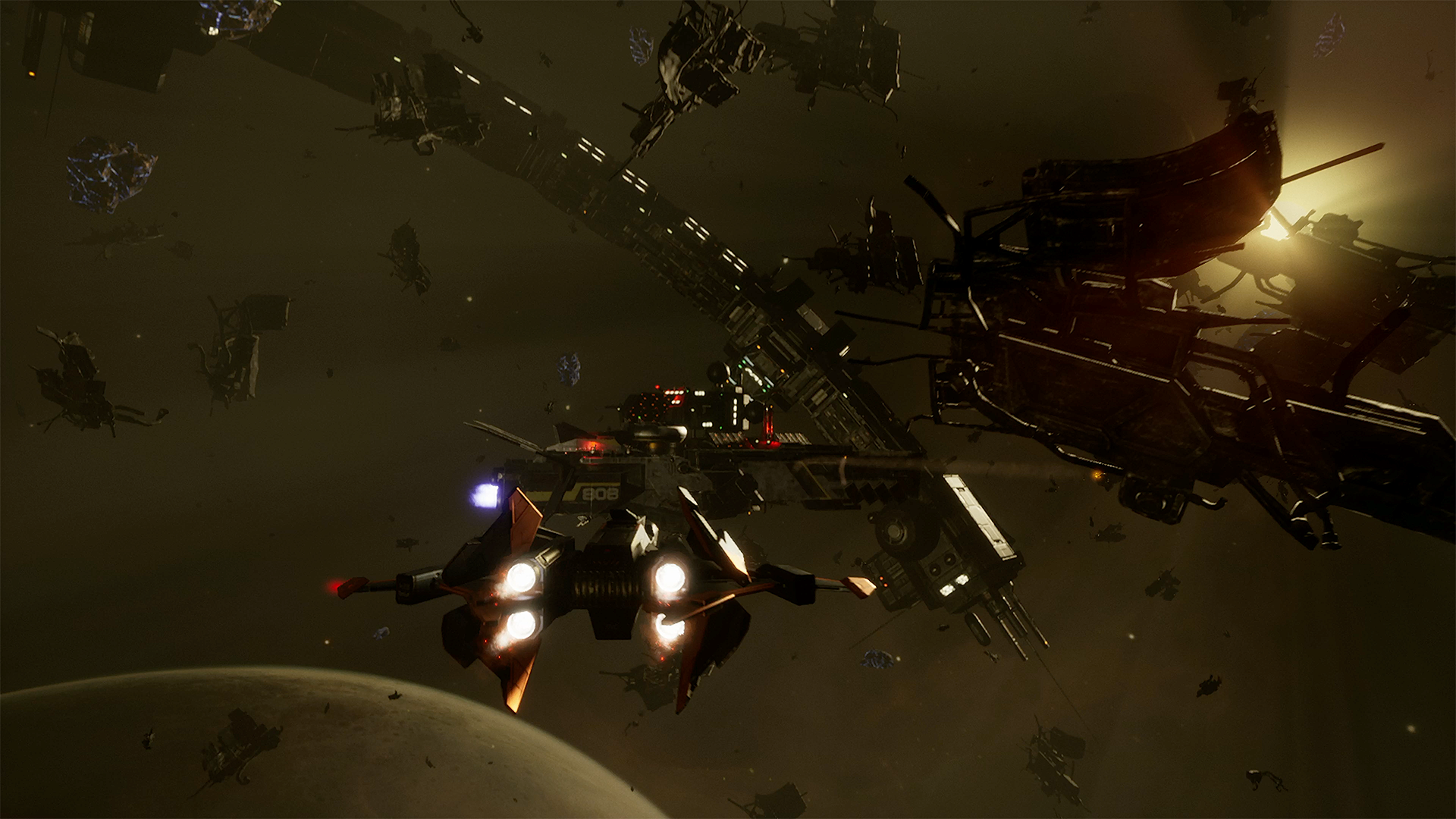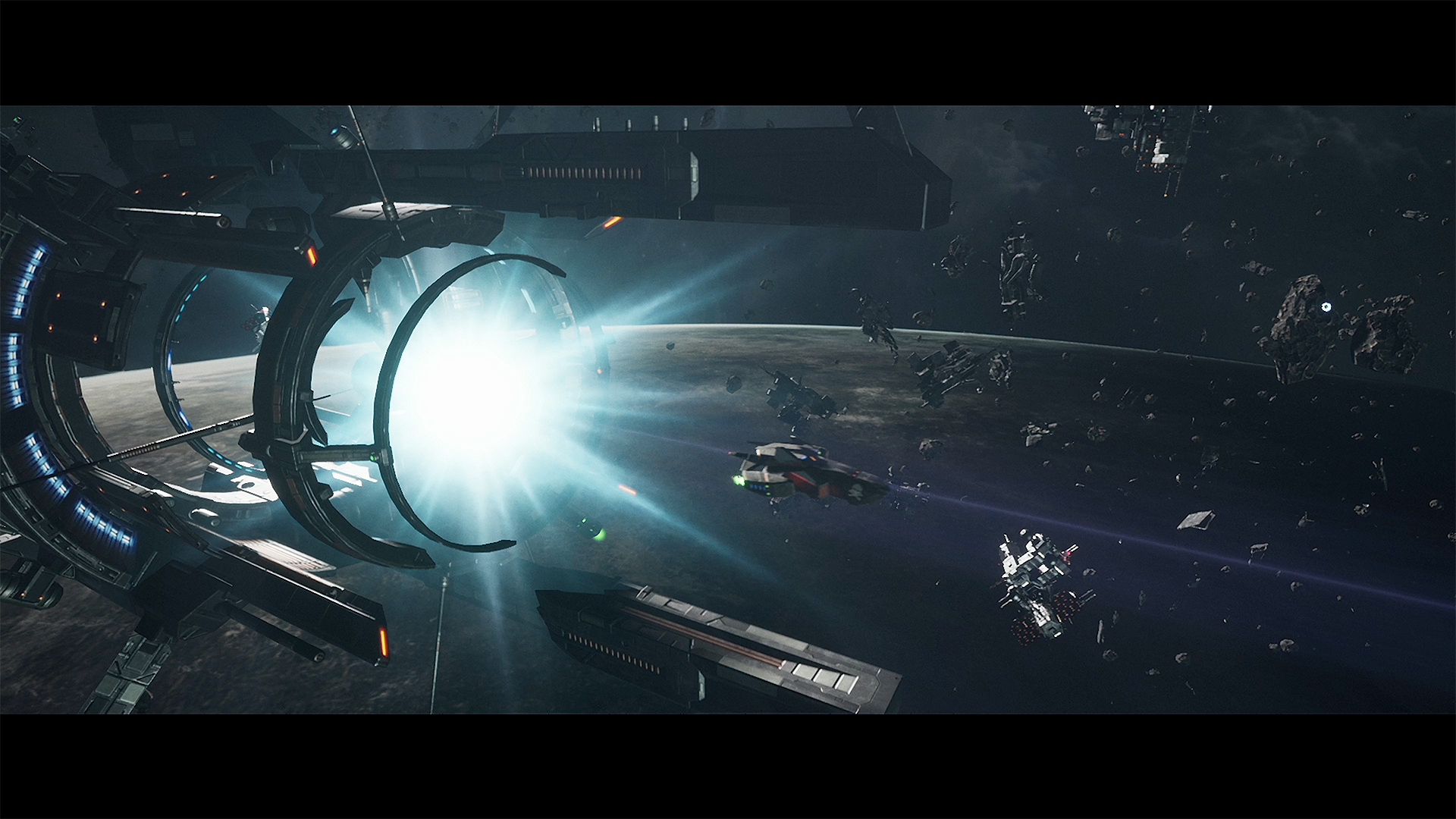Pete Witcher is a Feature and Community Writer for Blowfish Studios.
In Subdivision Infinity DX you are a freelance space pilot in the cockpit of a fighter ship. You’re on a mission in the Alpha Tyche system when enemy ships appear amid the giant asteroids and industrial space litter, and a dogfight ensues. A bogey is already on your six, peppering your shields with blaster fire. You hit thrusters and bank, roll, and strafe around mining rigs and satellites, using huge floating rocks for cover while your shields recharge. You activate your boost thrusters to quickly loop around behind your enemy, maneuver your reticle onto their ship and your targeting computer locks on weapons. One volley from your blaster weapon followed by a mini-nuke-tipped homing missile, shreds the enemy ship and sends it fireballing into empty space above the giant red planet in the distance.
Explore every corner of the galaxy.
That’s how Subdivision Infinity DX begins, and it just gets better from there. After the initial battle and very brief tutorial, you discover your hangar/shop/mission base and meet your android companion, who exists mainly to provide exposition for the storyline. I was suspicious of the amount of dialog during the first couple missions, thinking the game would be very dialog-heavy. But there’s always a “skip dialog” option, even the first time through, and for that I thank the game designers. Sometimes I really *want* to know about backstory and character development and motives. But sometimes I just want to get to the next mission so I can fly a spaceship and destroy things using blasters and lasers and rockets.
For the first few minutes I was a bit overwhelmed by learning the controls, identifying objects around me, tracking targets, and just getting my bearings in general. There’s a lot happening on-screen at any given moment, with many different objects at many distances, most of them in motion. The first solar system in the game has a lot of red in the background, and it washed out some of the colour in the red tracking circles around my enemies, making it somewhat difficult for me to follow targets at first. Luckily most of the early-level enemies also leave long blue contrails behind them, so that made it easier. I struggled through the first couple missions more than once, but eventually completed the objectives.
Every solar system will have it’s own colours, structures and planets, making them unique.
After getting familiar with the controls and completing the first few missions I thought I had this game figured out and I was expecting the usual experience that involved increasingly challenging missions with more enemies in newer, tougher ships. And Subdivision Infinity DX delivered that, which is good, but the game also surprised me and kept getting more and more interesting. When I finally got around to trying an Exploration mission, it offered new ways to interact with the environment and play the game, as well as a slightly slower pace that comfortably offset the intense battles of the Campaign missions. A few enemies warp in to harass you every few minutes, but there are lulls in between when you can scout around for items and objectives, and mine asteroids for valuable ore and minerals.
Subdivision Infinity DX does not hold your hand or “overguide” you. There’s a very brief but very immersive tutorial at the beginning of the game to show you the basics of how your ship works. Then you’re on your own. Luckily the user interface is slick and easy to navigate, and it doesn’t take long to figure everything out. Through trial and error I discovered that in Exploration missions, you can use key cards to unlock bay doors leading into semi-hollow asteroids honeycombed with tunnels and chambers. Inside you can score rare loot like blueprints for exclusive ships. (The key cards seem to be randomly dropped by enemies.) You can also launch probes in Exploration missions that reveal and target loot, which saves a lot of time exploring these massive levels. Probes can be purchased in the Store, and are sometimes dropped by defeated enemies.
The user interface is simple and easy to navigate. It allows you to jump straight into the action!
The “inside an asteroid” quests provide a stunning contrast in scale; one moment you’re swooping through open space so deep and vast it induces thalassophobia, the next you’re slowly threading your ship through dark, narrow stone tunnels lit only by your spotlight and weapon fire. Older gamers like me might get a strong Descent vibe - and that is very OK. I found the strafing controls to be extremely useful in these tight environments, just as they are for evading fire during dogfights.
It’s easy to earn huge sums of money by selling ore and other loot mined from certain asteroids in these Exploration missions. You can purchase a mining tool from the Shop for a paltry 100 credits, then equip it in a primary weapon slot before you embark on an Exploration mission. Once the mission begins, you can scan nearby asteroids for some that contain valuable ore and other items, then fly in close and light up your mining tool. Firing the tool’s laser into the asteroid releases loot until the giant rock breaks apart, spent. (This particular feature flashed me back to the arcade classic Sinistar; good times.) You can repeat the process until your cargo hold is full, while periodically dodging and dispatching low-level enemies that warp into the system. Make it back to the warp portal in one piece to bank your loot and sell it to the Shop back at the hangar.
Use warp portals to start and finish your missions.
The more I played, the more Subdivision Infinity DX drew me in. I got the sense that the people who designed this game cared about balance and the fun factor. The missions and tech trees progress along a basically linear path (compared to War Tech Fighters relatively high number of possible mech configurations, for example), but each unlocked weapon, ship, or mission introduces new elements that keep the gameplay fresh and exciting. There’s always a sense of progress and increasing power. New weapons can be unlocked by replaying missions to grind XP, and individual weapons can be upgraded four times each with earned money and collected drops. The light fighters I struggled to defeat with a level one Pixel Gun and Pendulum rockets are child’s play when I’m piloting my new and upgraded ship, armed with incendiary ballistic ammo, a level 5 laser, and level 5 Pendulum rockets. Fortunately, new missions bring new and tougher enemies so there are always new challenges to overcome.
Upgrade your weapons to defeat bigger and more powerful enemies.
There are five chapters in the game, each one taking place in a different solar system. The solar systems each have unique background colours as well as planets, stars, and local structures that add to the sense of traveling to a new place. Each chapter contains four campaign missions plus a boss fight, and two Exploration missions. The campaign missions provide a little exposition and purpose through dialog, then your ship warps into the battlefield. The objectives vary, sometimes involving tasks like searching for survivors of a space battle, but usually involve shooting enemy drones, mercenary fighter ships, cargo ships, proximity mines, mini satellites, and other explodable targets.
Your selection of weapons is dictated by the tech tree, which is basically linear. You start with one ship, and unlock up to 9 more by reaching certain levels and acquiring blueprints and other items. Half the ships are “exclusive” and can only be acquired by finding blueprints on exploration missions. The other half can be simply purchased when unlocked. Additionally, each ship can be “evolved” once for a 20% armour boost and a 25% cargo boost. Evolving costs Evolution Kit power ups which are randomly dropped by destroyed enemies.
Upgrade your ship or acquire blueprints to unlock new ships!
The level design is gorgeous and well-suited to a spaceship combat game.There’s no up or down, no north or south. All directions are relative to your ship and your orientation, and the explorable space goes on for days. I like how my ship behaves much more like a craft in space than an airplane in an atmosphere. When I release the thrusters, the ship continues in the direction it was traveling, and I can still rotate the ship around 180 degrees to train my weapons on the bogey previously on my six. For most ships the “boost” meter is generous, which is very convenient when you realise how immense these outer space levels are.
As a side note, I applaud Mistfly Games for deciding to use the Unreal engine to create this game. Not many spaceship combat games use the Unreal engine, but it seems to fit the genre well here. The lighting effects, explosions, smoke, and other effects are beautiful and smooth, and the physics are immersive and intuitive.
Subdivision Infinity DX’s has stunning graphics and effects.
Subdivision Infinity DX is a solid and engaging spaceship combat game that doesn’t try to be all things to all people. The game focuses on doing a few things well and the result is a very enjoyable experience. It assumes you’ve played games like this before and want to get into the action and stay there. Subdivision Infinity DX is a smart investment for any gamer who enjoys intense dogfights set in glorious outer space backdrops against mercenaries and greeble-covered cargo transports and battleships. It’s available on Steam, PS4, Xbox, and Switch, download it today.









